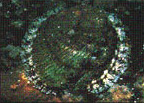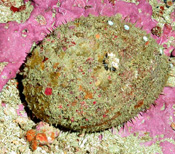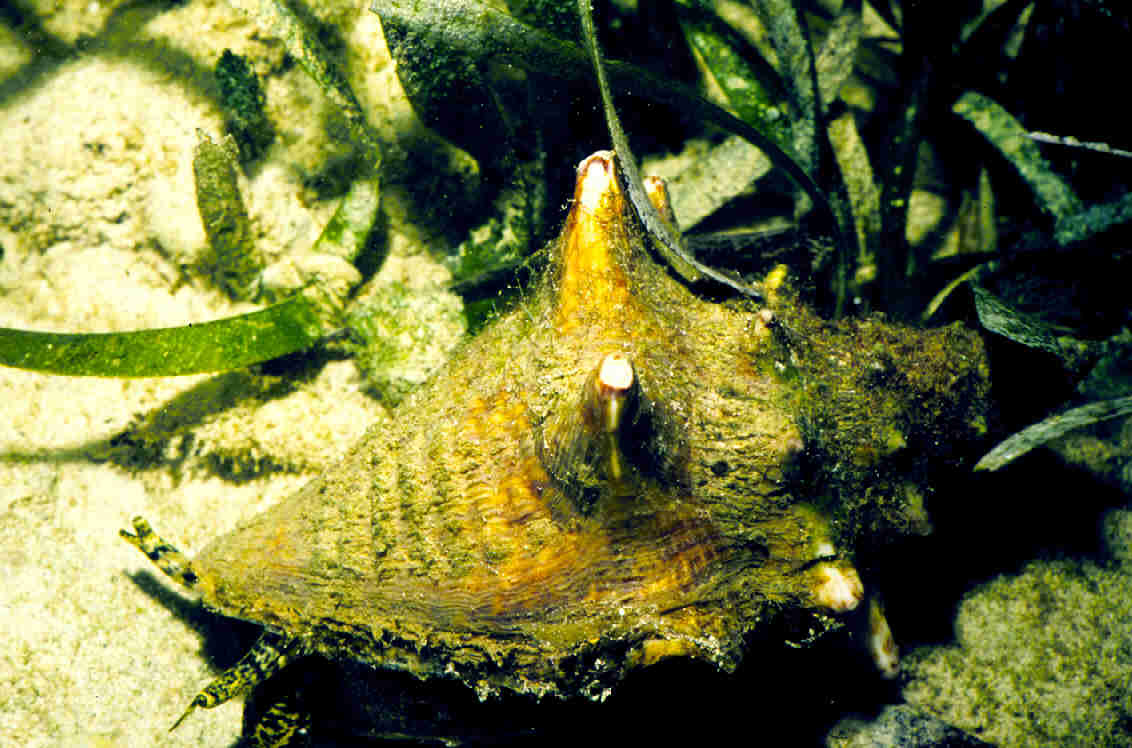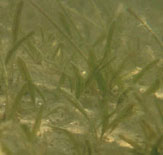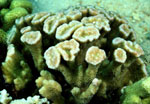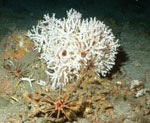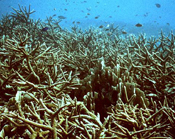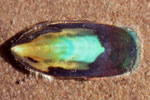Marine Invertebrates and Plants
Mollusks | Plants | Corals | Brachiopods | Main Factors for Decline | More Information
Overview
Mollusks, corals, and brachiopods are three groups of marine invertebrates. For more information about mollusks, about marine plants, about corals, or about brachiopods, please see below.
Status of Marine Invertebrate & Plant Species
The table below illustrates the marine invertebrates and plants listed under the Endangered Species Act (ESA), as well as those that are Species of Concern or Candidate Species.
(E = "endangered"; T = "threatened"; P = "proposed"; C = "candidate"; S = "species of concern")
| Species |
Status |
|
C |
|
E |
|
T |
|
S |
|
S |
|
S |
|
S |
|
T |
|
S |
|
S |
|
T |
|
E |
About Mollusks
Mollusks (from the Latin word molluscus, meaning "soft") are a phylum of invertebrates with over 50,000 known species.
There are seven classes of mollusks:
- Gastropoda (e.g., abalone and conch, such as black abalone, green abalone, pink abalone, pinto abalone, white abalone, and queen conch)
- Bivalvia (e.g., oysters and clams)
- Cephalopoda (e.g., octopus and squid)
- Aplacophora (worm-like mollusks)
- Monoplacophora (only mollusk with a segmented internal structure)
- Polyplacophora (e.g., chitons)
- Scaphopoda (e.g., tusk shells)
The majority of mollusks (including abalone) are of the Class Gastropoda, whose name translates from Latin as "stomach foot." Mollusks are soft-bodied animals that may have a hard external shell (composed by secreting calcium carbonate), a hard internal shell, or no shell at all. Mollusks are taxonomically related to annelids (segmented worms) and pogonophora (deep-sea tube worms).
About Marine Plants
There are several categories of marine plants, including seagrasses, mangroves, and algae. Seagrasses, such as Johnson's seagrass, are true flowering plants that have adapted to life in the marine environment. Most seagrasses reproduce via pollination (similar to many terrestrial plants) and are found in coastal marine areas. Mangroves are also true flowering plants and are found in coastal waters of varying salinities. Algae are not true flowering plants and range in size from microscopic phytoplankton to large seaweed species.
About Corals
Corals are invertebrates within the phylum Cnidaria and date back in the fossil record to at least the Cambrian period (over 500 million years ago). Corals are composed of invertebrate polyps and can generally be categorized as either hard or soft corals. Hard corals have calcium carbonate skeletons, grow in colonies, and are reef-building animals living in symbiosis with phytoplankton called zooxanthellae. Soft corals are flexible and have calcareous particles in their body walls for structural support. Soft corals do not grow in colonies or build reefs, can be found in both tropical and deep, colder ocean waters, and do not always contain zooxanthellae. Corals are taxonomically related to anemones, jellyfish, and hydras.
Corals are classified in a single class:
- Anthozoa, with two subclasses for extant species:
- Octocorallia (e.g., gorgonian corals, sea-pens, and soft corals)
- Zoantharia (also called Hexacorallia; e.g., black corals and Scleractinia, the reef-building corals). Elkhorn, Staghorn, Ivory tree, and Hawaiian reef corals are all in the order Scleractinia
About Brachiopods
Brachiopods are bottom-dwelling, filter-feeding invertebrates whose name translates from Latin as "arm feet." Brachiopods are sessile (stationary, attached), and were the first sessile animals to surround their bodies with a solid external shell. They appear similar to clams on the outside, but have a unique anatomy. Most brachiopods attach to substrate using a muscular stalk (or pedicle) and feed using an appendage called a lophophore. The brachiopoda phylum is common in the fossil record, and brachiopods were extremely abundant in the Paleozoic era. Their numbers were greatly reduced during the Permo-Triassic mass extinction approximately 250 million years ago, and today there are approximately 300 living species of brachiopods. Brachiopods are taxonomically related to bryozoans, or lace corals.
There are two main classes of brachiopod:
- Inarticulata (e.g., inarticulated brachiopod)
- Articulata
Main Factors for Decline
- Abalone: overharvesting, low population density, loss of genetic diversity, disease, poaching, and natural predation
- Queen Conch: unsustainable harvest
- Plants: habitat alteration due to human and natural perturbations, and degradation of water quality due to nutrient enrichment
- Coral: disease outbreaks since 1980; habitat degradation and modification due to sedimentation; increased predation; hurricanes; pollution; alien species; invasive green algae; limited distribution; damage from mechanical fishing gear, anchors, fish pots, divers, and swimmers; and coral bleaching
- Brachiopods: habitat degradation and alteration, overexploitation, pollution and sedimentation, vulnerable life history characteristics, and limited distribution
For More Information
NOAA Coral Health and Monitoring Program
NOAA Coral Reef Information System
NOAA Fisheries Coral Reef Conservation
CITES (Convention on International Trade in Endangered Species of Wild Fauna and Flora)
|
 |


